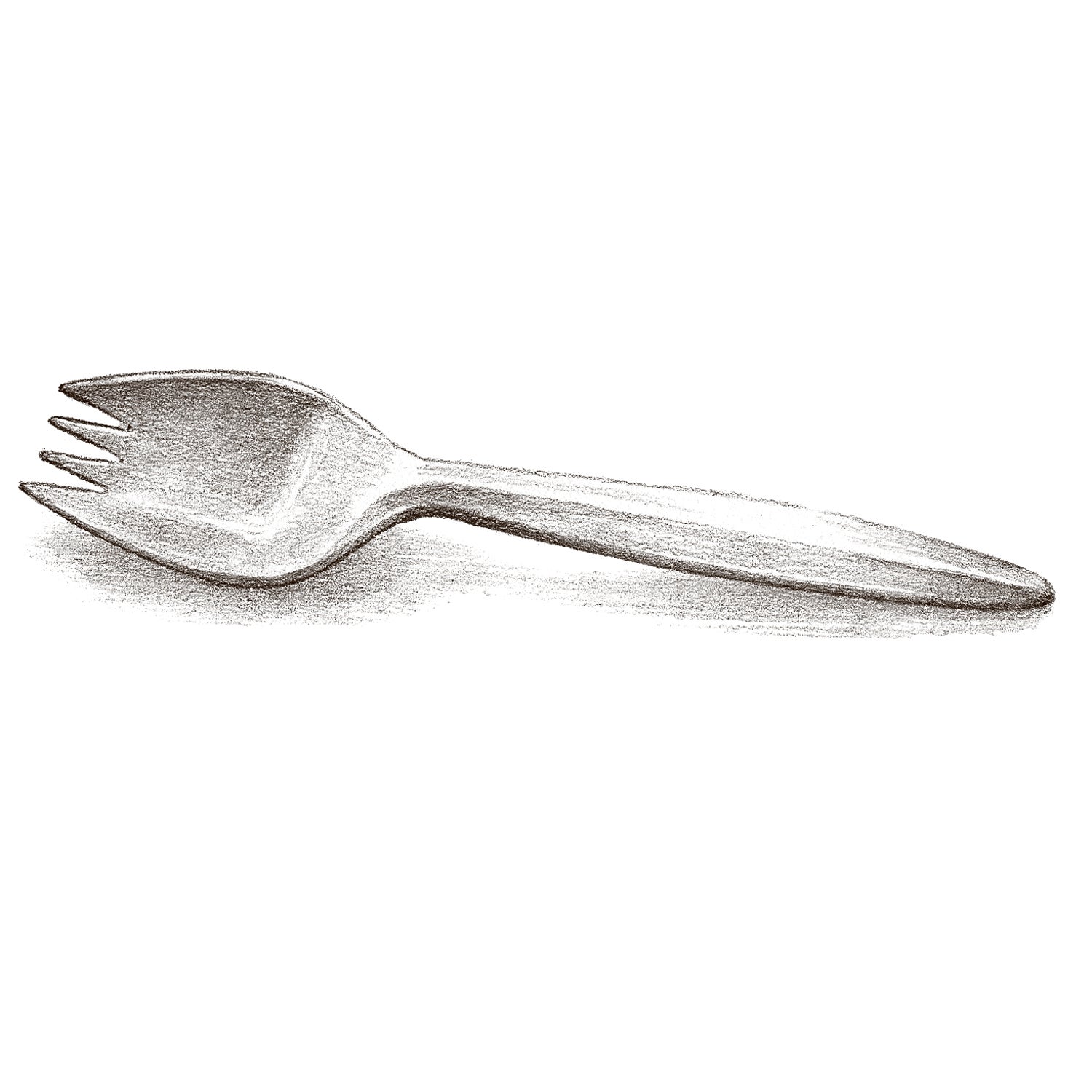An eating utensil that adds fork tines to a spoon and never fails to amuse its users. The imperfect hybrid of unknown origin first appeared in the dictionary in 1909; it has since enjoyed a front-row view of history to rival Forrest Gump. A few highlights: General Douglas MacArthur allegedly gave sporks to Japanese prisoners to prevent them from attacking Allied soldiers with the pointed ends of forks or chopsticks (1940s); the utensil made a cameo in Disney’s Academy Award–winning Wall-E (2008); an independent musical—Spork—featured a hermaphrodite protagonist (2010); President Bill Clinton, in a nationally televised speech, compared the dual nature of his administration to a spork (1995); and, in a bizarre incident, a would-be robber attempted to hold up a bank in Anchorage, Alaska, with a spork from a local fried-chicken restaurant (2008).
One might assume, in the age of the expansive multitool (see Leatherman), that the implement’s cultural significance is on the wane, but recently the Swedish manufacturer Light My Fire reimagined it by positioning a fork at one end of a utensil and a spoon at the other. Though its creation does not meet Merriam-Webster’s strictest definition—“a spoon-shaped eating utensil with short tines at the front and that is usually plastic”—Light My Fire has sold more than 20 million of them in 52 countries.

